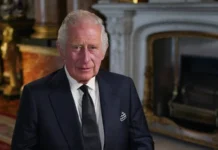With the success of the docking of the Axiom-4 space module with the ISS, 41 years of effort by India in the field of space have shown impressive returns. Critics were mocking at the delay, but they need to be ignored. Piloting a rocket capable of breaching into outer space and its attendant module is an engineering and scientific achievement the country has justification for feeling pride. India is not yet a fully Vikisit Bharat where several economic parameters are concerned. Yet the progress made by the country in space exploration is a tribute above all else to the ISRO and to its associates such as the VSSC. It was on 21 November 1963 that the quest to conquer outer space was begun in Thumba, Kerala. A small rocket took off and soon afterwards, headed earthwards again. Few would have believed that India, with its poverty and its competing interests, could have reached the stage that the participation of an Indian astronaut on the Axiom-4 mission has. It was wise to opt for a multinational crew of astronauts, composed of nationals of countries that are friendly to India. Commander Peggy Whitson of the US was put in charge, with Group Captain Shubanshu Shukla of India as pilot. A key task indeed, given the “camel through the needle eye” nature of the docking procedure once the ISS was reached. Tibor Kapu from Hungary and Slawosz Uznanski-Wisniewski from Poland are the mission specialists. Citizens from each of these countries, not to mention space buffs from several other countries, will have watched the progress of the mission and understood the strides that India has taken in the cutting edge world of space exploration. No better technology demonstrator can be thought of.
Just thirteen years later, on January 28, 1986 the US Challenger blasted off into space from the Kennedy Space Centre launchpad. Just 73 seconds later, the spacecraft broke into pieces, killing all seven crew members aboard. A small component, the primary and secondary O rings in a joint in the craft right booster, was the reason, for they had a defective seal which could not withstand the pressure from inside the craft, which thereupon blew apart when encountering the propellant. Schoolchildren across the US would have been watching from their classrooms, as a schoolteacher, Christa McAuliffe was on board. At that point in time, the US was on the cusp of its entry as the sole occupant of a unipolar world, as the USSR was veering towards implosion hastened by the efforts at reform of Mikhail Gorbachev. His policy of glasnost (transparency) enabled citizens of the USSR to see for themselves the mess their country was in, with Perestroika (reforms) being but band aids on a collapsing economic model. The failure was part of the process of learning, and the US still leads in space technology, despite strenuous efforts by China to outpace it in this.
In a world once again clearly divided into the competing blocs mapped out in the book “Cold War 2.0”, it is important that cooperation be restricted to friends, so that cutting edge technology is not shared by foes. The Axiom-4 mission embodies just such an essentiality of the times. More cooperation between allies and partners need to develop in space technology, and it is certain that they will as a consequence of the advantages such synergy brings.







